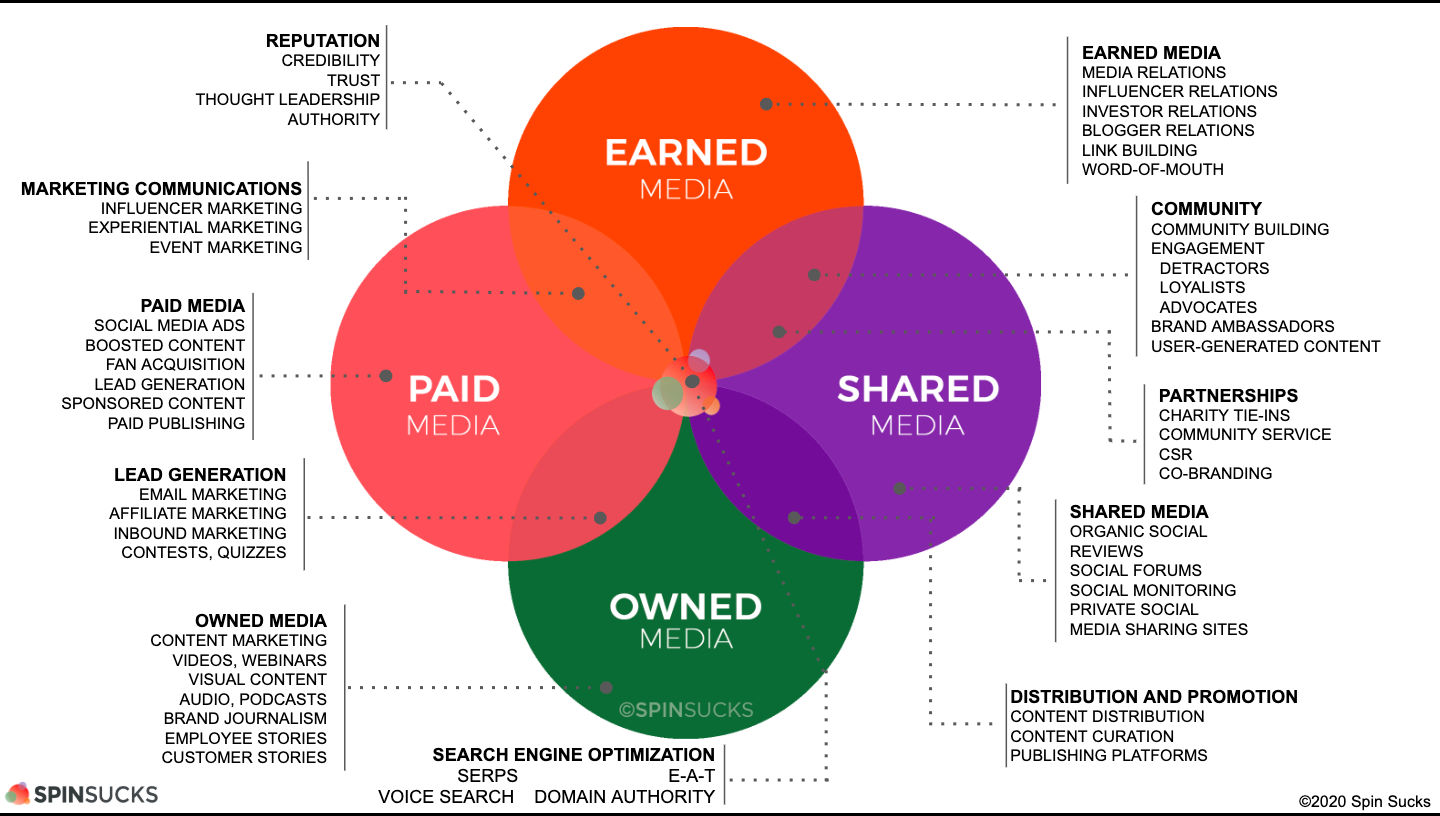The PESO Model: Putting the Four Types of Media to Work for Business Development
As 2021 promises to bring an even more challenging media landscape for legal marketing leaders to work with, now might be a good time for your team to familiarize itself with Gini Dietrich’s innovative PESO Model for integrated marketing and PR.
In legal PR and media relations, times have changed — there’s no getting around it. The number of reporters and news outlets continue to fall, and there are no signs that trend will reverse anytime soon. After all, the media industry suffered financial strife and massive job cuts long before the COVID-19 pandemic. Fewer reporters, of course, means fewer opportunities for media placements.
As the calendar turns to 2021, legal marketers can’t keep doing their jobs in the same old way.
And that’s where Dietrich’s PESO model comes into focus. The model integrates the four kinds of media — Paid, Earned, Shared, and Owned — under a single umbrella strategy, and shows how marketers and PR pros can coordinate efforts across these areas to make data-driven decisions on promotion.
Dietrich, a 15-year marketing pro who is also the founder, CEO and author of the book Spin Sucks, is an industry leader in building reputation, growing brand awareness, and improving sales. Here are more details on each segment of the PESO model:
P — Paid Media. Paid media includes traditional and social media ads, “pay-to-play” sponsored content, and email marketing. To measure the impact of paid media, Dietrich suggests using landing pages, tracking how many visitors download the content and collecting information for an email marketing database.
E — Earned Media. Earned media is the traditional “wins” in media relations or publicity and includes getting an attorney cited as a subject matter expert (SME) in a Law360 article, or as a guest on a TV news program or podcast. Earned media still offers a coveted stamp of approval by trusted sources and can help establish an attorney as a leading voice on a topic. It can also lead to strong relationships with legal reporters, which pay off in the long run. Earned media can be measured, Dietrich says, by web traffic related to a story about the firm, and also by tracking the number of new email subscribers resulting from the story.
S — Shared Media. Social media platforms such as Twitter, Facebook and LinkedIn have now become a law firm’s most efficient way of communicating with employees as well as potential clients. But shared media goes well beyond social networking to include community, partnerships, distribution and promotion. To measure the effectiveness of shared media placements, Dietrich recommends assigning a point system to likes, retweets, the number of times a post is shared and comments made on the post. Shared media is all about engaging your audience.
O — Owned Media. Your law firm blog, newsletter and webinars are owned media because you call all the shots when it comes to messaging. The great part about owned media, Dietrich says, is that it is yours alone and can be easily integrated with the other three types of media in the model. To measure the impact of owned media, marketers should pay specific attention to unique visitors, time spent on the site, and — if the law firm employs an organized owned media program — track the number of downloads and shares.
A law firm marketing department that can implement the PESO model and execute a communications initiative around it will be well positioned to gain visibility for its attorneys. For example, a high-profile lateral hiring is an opportunity for law firm marketing leaders to check each of the four boxes:
Paid: Set up a sponsored content opportunity for the new attorney to write an article discussing current trends about her practice area.
Earned: Pitch her based on this article to a reporter who runs Q&As with attorneys for a legal media outlet.
Shared: Announce the new hire on Twitter and LinkedIn.
Owned: Publish a post on the firm’s blog detailing the goals of the new relationship between the attorney and the firm.
Following the integrated PESO model sets firms up for success in today’s media landscape, and allows for legal marketers to employ a nimble strategy to distribute and measure the content.

